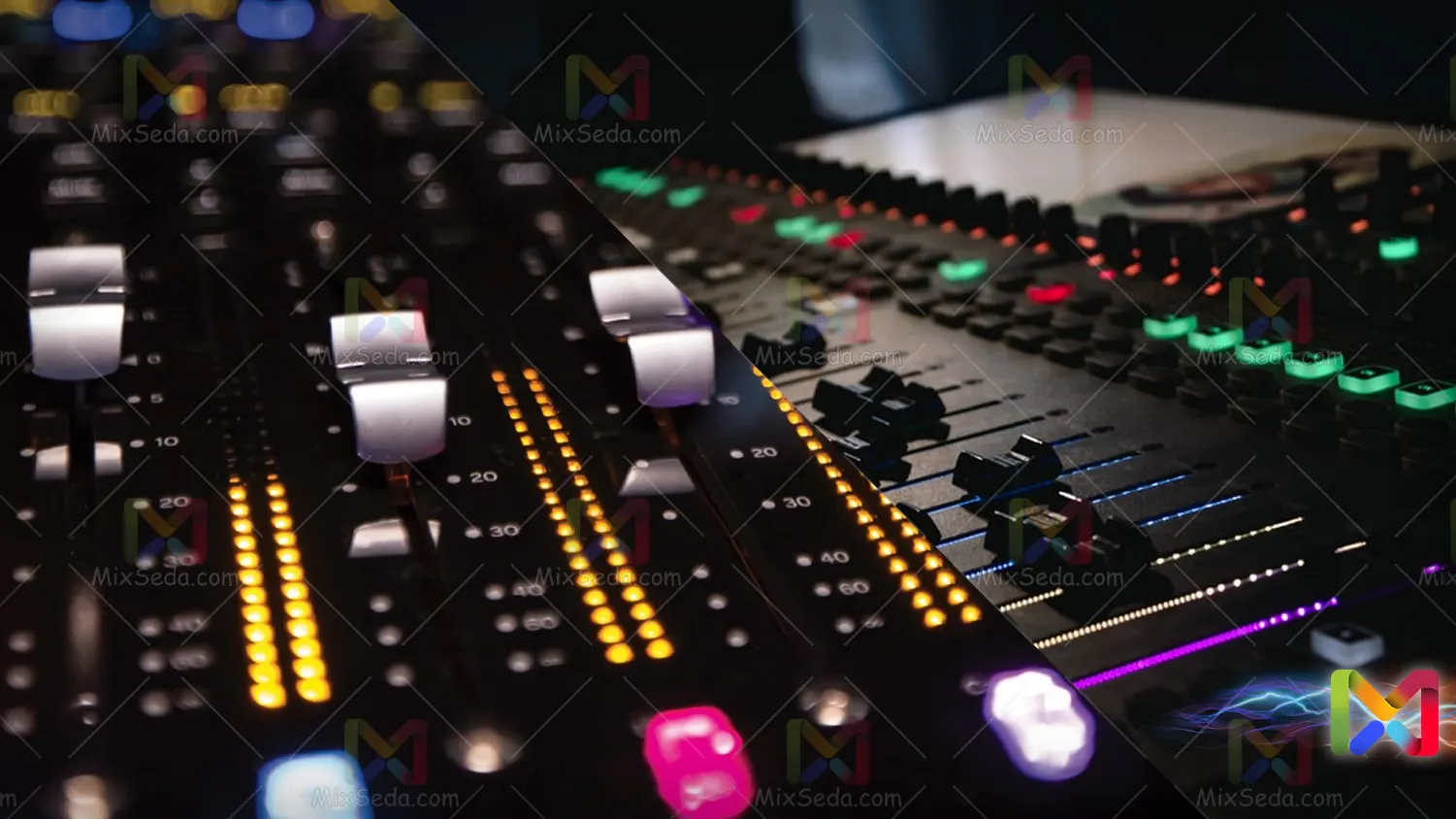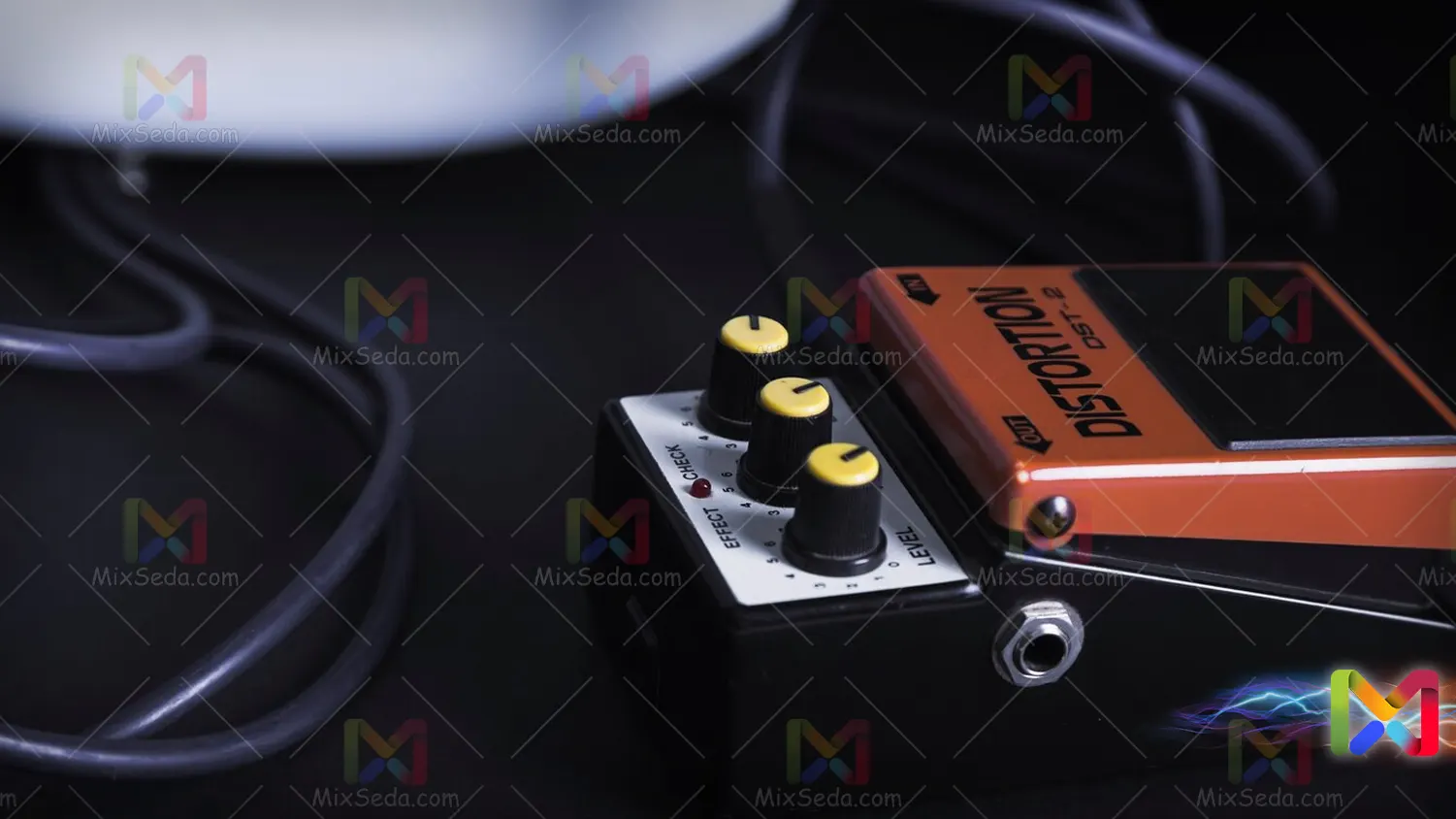
Sound level meter
If you look at a mixer in a program, you will see lights on indicating the volume. The set of these lights is called the vu meter or peak meter and we use these lights to find out the volume of each section or the mixer output.
In digital mixers, there is usually a vu meter for each section and the volume of each section is displayed digitally on the digital mixer display. In digital mixers, the vu meter uses a much more accurate mixer, so much so that it can be safely said that digital mixers do not have the slightest mistake in this area.
There is usually one or more, vu meters or peak meters, in mixers. To show the signal strength in each channel and master. To control the signal level and, above all, to prevent signal clipping.
Sound engineers usually open each channel so that even with the highest channel power supply, the signal does not clip or receive feedback. If I want to explain this concept more simply, the vu meter helps us not to distort the sound and not to go beyond its allowed limits.
What is distortion?
All audio and music equipment has some restrictions on signal reproduction. This means that any musical instrument can produce a certain amount of loud sound, and if it goes outside its specific range, the sound will be distorted.
One of the characteristics of distorted sound is the presence of a hoarse or so-called distorted sound. The distortion sound is of low quality and prevents the listener from enjoying a music due to the presence of annoying sounds.
An example of a distortion is drawing nails on a chalkboard. Most people inadvertently hate this sound, and according to scientific evidence, hearing such a sound kills human brain cells.
Having a distorted sound in the mix can cause the listener to dislike a piece of music, or hearing a distorted sound for a long time for a listener can cause physical harm.
Despite all these disadvantages, distortion sound also has its advantages.

Benefits and applications of distortion
Distortion also has applications in various industries:
- In some ceremonies and concerts, the distorted sound of a guitar or synthesizer is used to enhance the sound.
- In some types of music, distorted sounds are used to create a kind of rhythm and song.
- Distortion is also used to add volume to the sound.
- A series of distortion sounds are used to announce or warn. (Because it has more power.)
- I don't like talking about this, but in some prisons these voices are also used for torture.
One of the characteristics of a good audio mixer is that the sound output from the mixer is not distorted. If you turn up the mixer volume to such an extent that the speakers cannot reproduce it, the sound will be distorted. This means that the reproduced sound loses its original quality.
The equipment and instruments used to compose or mix, record or reproduce audio can have a huge impact on whether or not the sound is distorted. (Unwanted distortion)
If you want to produce a distorting sound, you can use tools such as distortion. (Sometimes distortion with the name distortion is also used in sound transmission.)
Types of distortion:
Distortion can occur wherever audio signals pass. If I want to explain more simply, you have a duty to control distortion in audio recording, sound mixing, equalizer settings, sound effects settings, amplifier settings, audio output settings and so on.
Distortion can occur wherever an audible signal is present. Here I want to explain some examples of distortion types:
clipping:
You may have seen that when mixing the sound, the so called sound is clipped, the clipping of the sound is a kind of distortion of the sound that we have all experienced. If you increase the volume of the input sound or the volume of the output sound (Overdrive), the clip type sound may be distorted.
In this case, the sound loses its original quality and if you turn up the volume too much, the sound quality will change.
Downsampling
This type of sound distortion occurs due to the reduced transmission speed. If you reduce the audio signal by a certain amount, your audio signal loses its quality and by definition; The sound is distorted.
As we have described the two types of distortion, it can be concluded that in the process of sound measurement, the amount of sound signals must be within certain limits. Neither the volume is loud enough for clipping to occur, nor is the volume low enough for downsampling.
Impedance
Impedance As the name suggests, impedance is caused by a mismatch between audio equipment. For example, if the volume of the audio signal produced by the sound source does not match that of the microphone, impedance occurs.
Sound that enters from one mixer to another, or sound that is produced or processed by one audio equipment and enters another device, will have an impedance or impedance mismatch if it is not set correctly.
Sometimes you will find that you have done all the settings correctly on a mixer, but when you listen to the PFL sound, you will still find that the sound is not of the required quality. In this case it is necessary to check the inputs and the sound source in order to prevent impedance.
All three of the sound distortions mentioned above are unwanted distortions, which means that in the above cases it is not intended to distort the sound, but depending on the system in which the sound is processed, the sound is distorted.
Today, in many styles of House, Hip hop, etc., you see the act of distorting the sound as a process of producing rhythm. In fact, if the distortion is used correctly; The distortion process is very practical and makes music very enjoyable.
There are devices that produce distorted sound effects.
Sound measurement lights
Having a signal with its maximum strength also increases the signal-to-noise ratio. The audio signal strength level meters (vu meters) can be both on top of the master power supplies and in each channel, they can have a smaller vu meter, with, for example, two LEDs, one of which indicates the presence of the signal. Another shows signal clipping.
Or a small vu meter with 4 LEDs. In non-manual vu meters, the LEDs are generally green, indicating the presence of signal and power, yellow, indicating high signal strength and clipping threshold, and red, indicating signal clips are present.
VU meters are rated in decibels due to the logarithmic nature of the human auditory response.
Note that correct gain setting and sound measurement have a great effect on the quality of the output sound.
Just to inform you, in some mixers, such as Dynacord devices, by pressing the PFL button at the bottom of each line, a portion of the vu meter is assigned to the signal level of the same line or lines. That is, the signal from the master section is displayed as a mono and single line.
